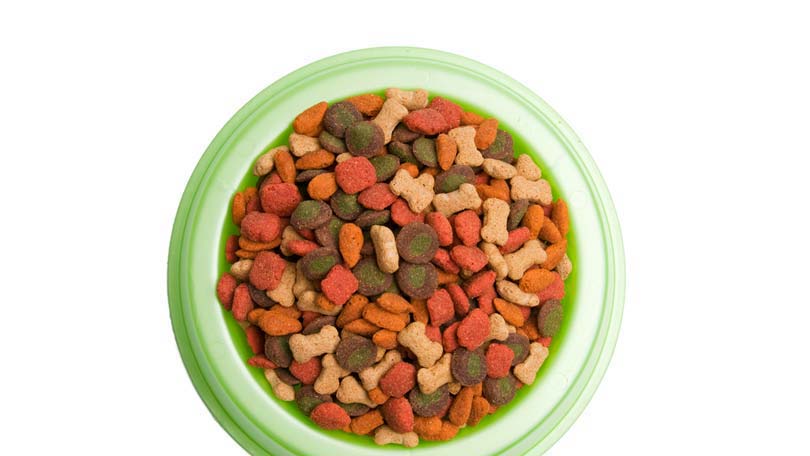Pros and Cons of Free Feeding Dogs
Free feeding your dog is when you leave food available for him at all times, usually dry food. Many owners like to free-feed their dog because it is convenient for them if they work long hours and their dog always has food if he gets hungry when they aren’t home. But there are pros and cons of free-feeding dogs. Here’s a look at what you need to know about this feeding practice.
Pros of free feeding
Free feeding your dog is convenient for the owner. If you can’t be home, you know that your dog still has food so you don’t have to feel guilty about your dog missing a meal. You don’t have to rush home or arrange for someone else to feed your dog.
If you have a dog who is a finicky eater, it is possible that he might eat more if you leave food down at all times. But it’s also possible that free feeding will make your dog fussier about his food. He might refuse the food you leave down for him and demand special food.
Cons of free feeding
Most experts oppose free feeding. Between 25 and 40 percent of the dogs in the United States are overweight or obese and some of this is due to feeding practices. Dogs can maintain a healthier weight if you measure the amount of food they eat at each meal and monitor how much food they eat. Free feeding is similar to putting your dog in front of the refrigerator all day. He can continue to eat and snack all day, even when he isn’t hungry. And dogs do eat even if they aren’t hungry, making them gain weight.
If you have multiple dogs, then free feeding poses several problems. You will not know which dogs are eating most of the food and which dogs might not be eating enough. And, leaving food down all the time can lead to dog fights. It’s generally better to separate dogs while they eat or at least supervise them if they eat together to avoid any bad temper or arguments over food.
Free feeding almost inevitably leads to higher dog food bills. Dogs will simply eat more food when it is constantly available, which will increase the amount of food you have to buy.
Feeding suggestions
Instead of free feeding your dog, it’s better to feed your adult dog 1-2 meals per day; feed 2-3 smaller meals per day if you have a small or Toy breed. Measure the amount of food you feed and follow the amounts recommended on the dog food label. These amounts are based on government food testing for canine nutritional requirements. You should use these amounts as a starting point for your dog. Every dog is different, however, so watch your dog’s condition and notice if he gains or loses weight. You can adjust how much you feed him based on what you observe.
Remember that the snacks you feed your dog also contain calories and they can add up during the day. If you feed your dog lots of snacks and dog cookies, you need to subtract them from the food you feed. You can check the website of various dog food companies and treat manufacturers to find out how many calories are in a cup of food or a handful of treats if this information is not provided on the package.
Dogs have different calorie requirements at different times of their lives. Their requirements will also depend on how active they are; whether they are spayed/neutered or intact; if they are young adults or getting older; and so on. So use the amounts suggested on the dog food package as a starting point but realize that you may have to adjust the amount you feed your dog.
In many cases you can purchase foods that are labeled “All Life Stages,” “Puppy,” or “Senior.” These foods can be good choices if you have a dog that fits in these categories. However, you will still need to use the feeding guidelines on the food and watch your puppy or dog’s condition to find out how much food your dog needs per meal/per day. The same is true with other specialty foods such as foods for weight loss, foods for allergies, or foods for other special health conditions. Always measure them and follow the label directions until you see how your dog is doing, and then adjust the amount to suit your dog.
Obviously, when you free feed your dog, it’s not possible to take these details into account. Your dog will simply eat and eat some more when there is food in front of him all day. That’s how many dogs end up overweight or obese. So, for your dog’s health, it’s usually best to avoid free feeding.

Having discovered a fondness for insects while pursuing her degree in Biology, Randi Jones was quite bugged to know that people usually dismissed these little creatures as “creepy-crawlies”.







